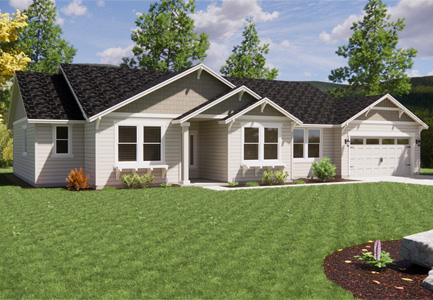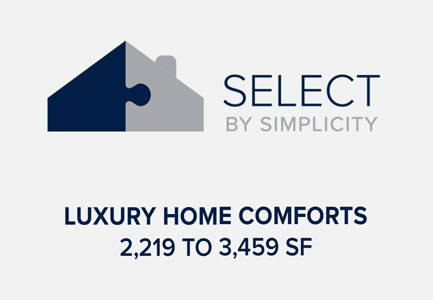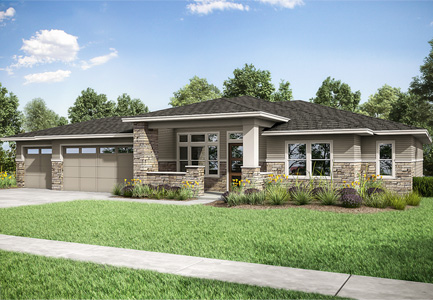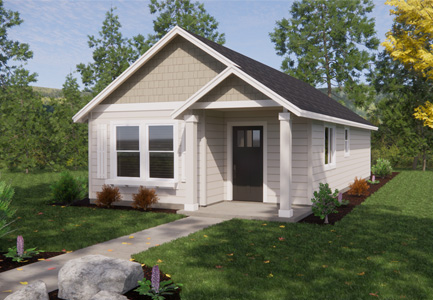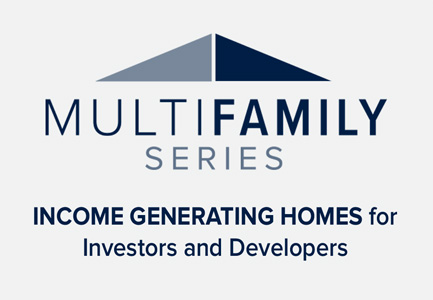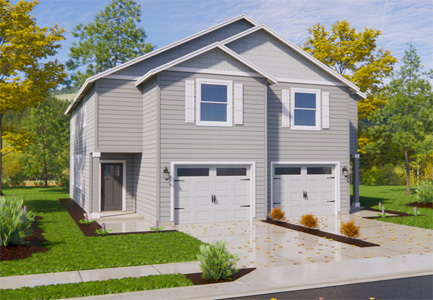Building a new home is an exciting milestone, but it comes with a significant financial investment. Staying on budget can be challenging, particularly when unexpected costs arise or tempting upgrades come into play. However, with the right planning and strategies, you can keep your finances in check while achieving the home of your dreams.
We’ll discuss some practical tips and actionable steps to help you effectively manage your budget during home construction. From the initial planning stages to the final walkthrough, you’ll learn how to make informed decisions that align with your financial goals.
Planning and Preparation
Setting a Realistic Budget
Before starting your build, figure out a realistic budget. Start by reviewing your current funds and exploring financing options like construction loans or mortgages. Research average homebuilding costs in your area and get an initial estimate from builders. If you’re considering Simplicity, try our instant quote tool to plan your project.
Be clear about what you can afford and leave some room for unexpected expenses. Once you have a general figure, create a detailed budget to track costs for everything – from buying land to choosing fixtures.
Knowing Your Financial Limits
Don’t overextend yourself. Focus on what you can realistically afford now and in the future. Be sure to include ongoing costs like property taxes, utilities, and maintenance. Understanding your financial limits will help you make smart decisions about things like the size of your home and custom features.
Researching and Choosing the Right Land
Where you build has a big impact on costs. Research land prices and check zoning rules in your area. Pay attention to factors like deed restrictions, flood zones, and access to utilities. Overlooking these details could lead to costly surprises later. Check out more tips on choosing land for your new home.
Creating a Contingency Fund
A contingency fund is one of the smartest things you can plan for. Set aside 10% to 15% of your total budget to handle unexpected costs like delays, extra labor, or design changes. Having this financial cushion will keep you on track when things don’t go as planned.
Design and Layout Considerations
Home Size and Layout
Every square foot of a home costs money. While it might be tempting to build bigger, think carefully about how much space you actually need. Bigger homes mean higher costs for construction, energy, and maintenance, which can quickly stretch your budget.
Instead of focusing on size, prioritize layouts that use space efficiently. Open floor plans, for example, can make a home feel bigger without adding extra square footage. Check out these tips for choosing the right floorplan.
Focus on Must-Have Features
Building your dream home doesn’t mean you can include every feature. Focus your budget on what matters most to you. Maybe it’s a roomy gourmet kitchen or warm hardwood floors. Decide on your top priorities and plan your spending around those.
Decide on Finishes Early
Choosing finishes like flooring, countertops, and cabinets early on helps lock in prices and avoids delays. It also prevents last-minute upgrades that could blow your budget. Communicate your decisions clearly with your builder from the start.
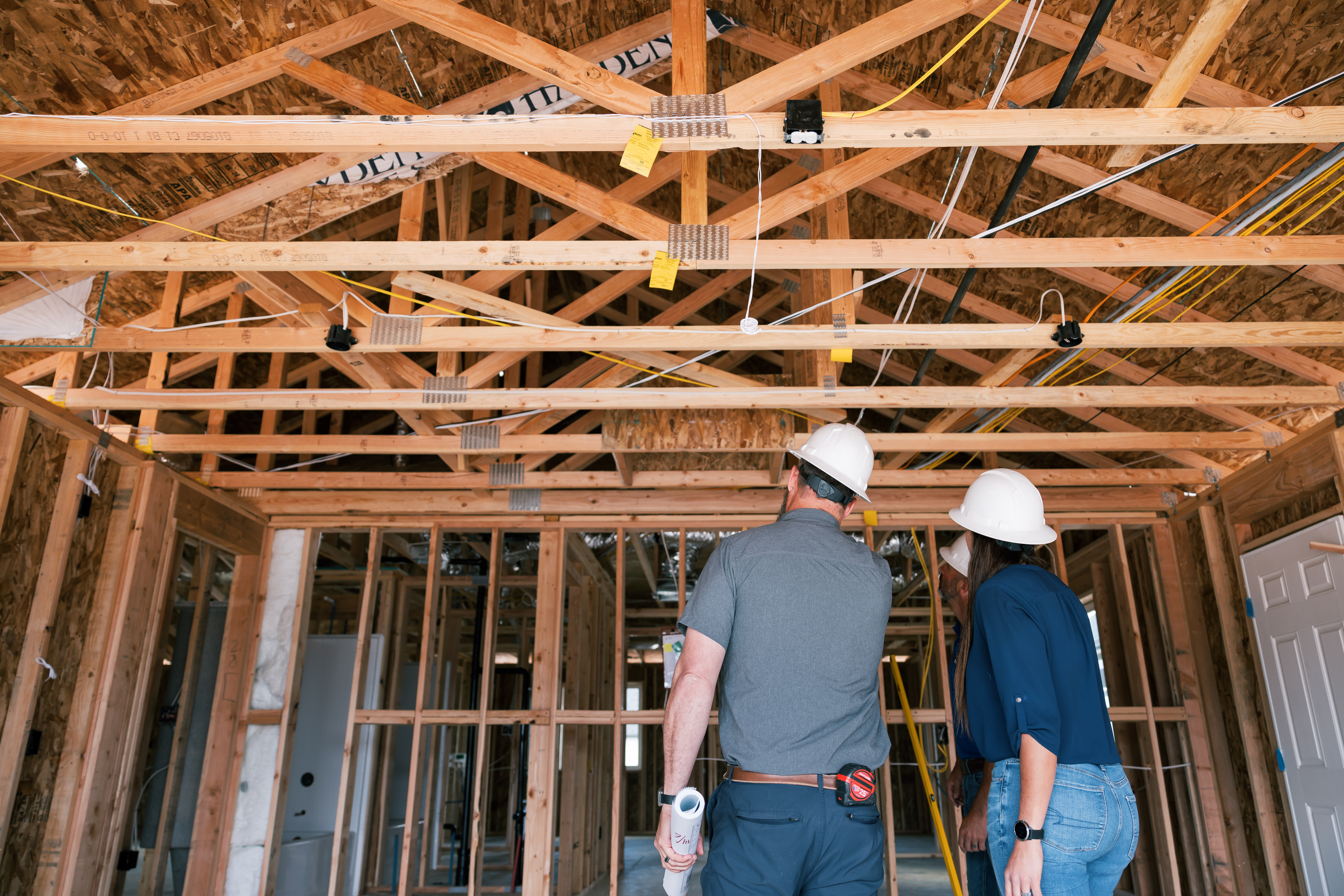
Working with Professionals
Choosing the Right Builder
Selecting your builder is one of the most important decisions you’ll make. Look into their reputation, ask for references, and read reviews. Focus on builders with a proven history of staying on budget.
Understanding Building Methods
There are three main ways to approach home building:
- Production Builders: Offer pre-designed layouts that are affordable but less flexible.
- Custom Builders: Give you full creative control but are more expensive.
- DIY Approach: Ideal for those with construction experience, letting you save money but requiring significant time and effort.
Pick the option that fits your budget, timeline, and vision best.
Hiring the Right Team
If your builder doesn’t provide plans, you’ll need to assemble a team to make your vision a reality. From architects to plumbers, every professional plays a key role in ensuring quality and staying on budget. Always hire licensed and insured professionals to avoid legal or financial issues.
Permits and Regulations
Getting permits can be time-consuming, but they’re essential to avoid fines or delays. Include permit fees in your budget and make sure all your paperwork is sorted before construction starts.
Managing Costs During Construction
Avoiding Scope Creep
Making changes during construction, like altering layouts or materials, can quickly drive up costs. Stick to your original plan unless absolutely necessary, and always ask for a cost estimate before approving any changes.
Choosing Cost-Effective Materials
High-end materials look great, but there are affordable alternatives that provide similar style and durability. For instance, engineered wood can replace hardwood, and quartz countertops are a good substitute for marble.
Saving on Energy Efficiency
Energy-efficient options like insulation, LED lights, and high-efficiency HVAC systems might cost more upfront but can lower utility bills in the long run. Think of these upgrades as smart investments for the future.
Timeline and Project Management
Keeping Your Project on Schedule
A clear timeline helps avoid delays that can drive up labor and material costs. Work closely with your builder to plan each phase of construction and regularly monitor progress.
Staying Flexible and Planning for the Unexpected
Construction projects often face challenges like weather delays, supply issues, or labor shortages. Being flexible and prepared for these setbacks can help you manage stress and keep costs in check.
Clear Communication
Keep communication with your builder and team regular and transparent. Discuss potential issues early and work together on cost-effective solutions.
Stick to Your Budget
Avoid upgrading every feature. While each upgrade might seem affordable on its own, they can quickly add up and push you over budget.
Build Your Dream Home Without Breaking the Bank
Building within your budget is possible with the right approach and tools. With proper planning and disciplined execution, you can move into your dream home without financial stress.
By following these steps, you’ll stay on budget and feel proud knowing you achieved your dream home without sacrificing financial stability.
If you’re ready to take the next step, Simplicity by Hayden Homes is here to make the process seamless and rewarding. Visit our website to explore plans, request an instant quote, or speak to our team about your vision. Together, we can make the process of building your new home as straightforward and rewarding as possible.

